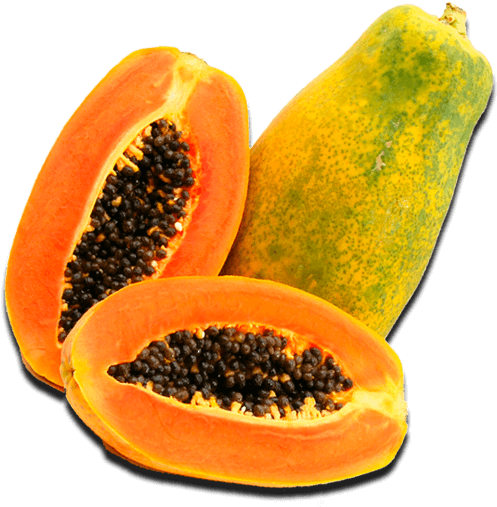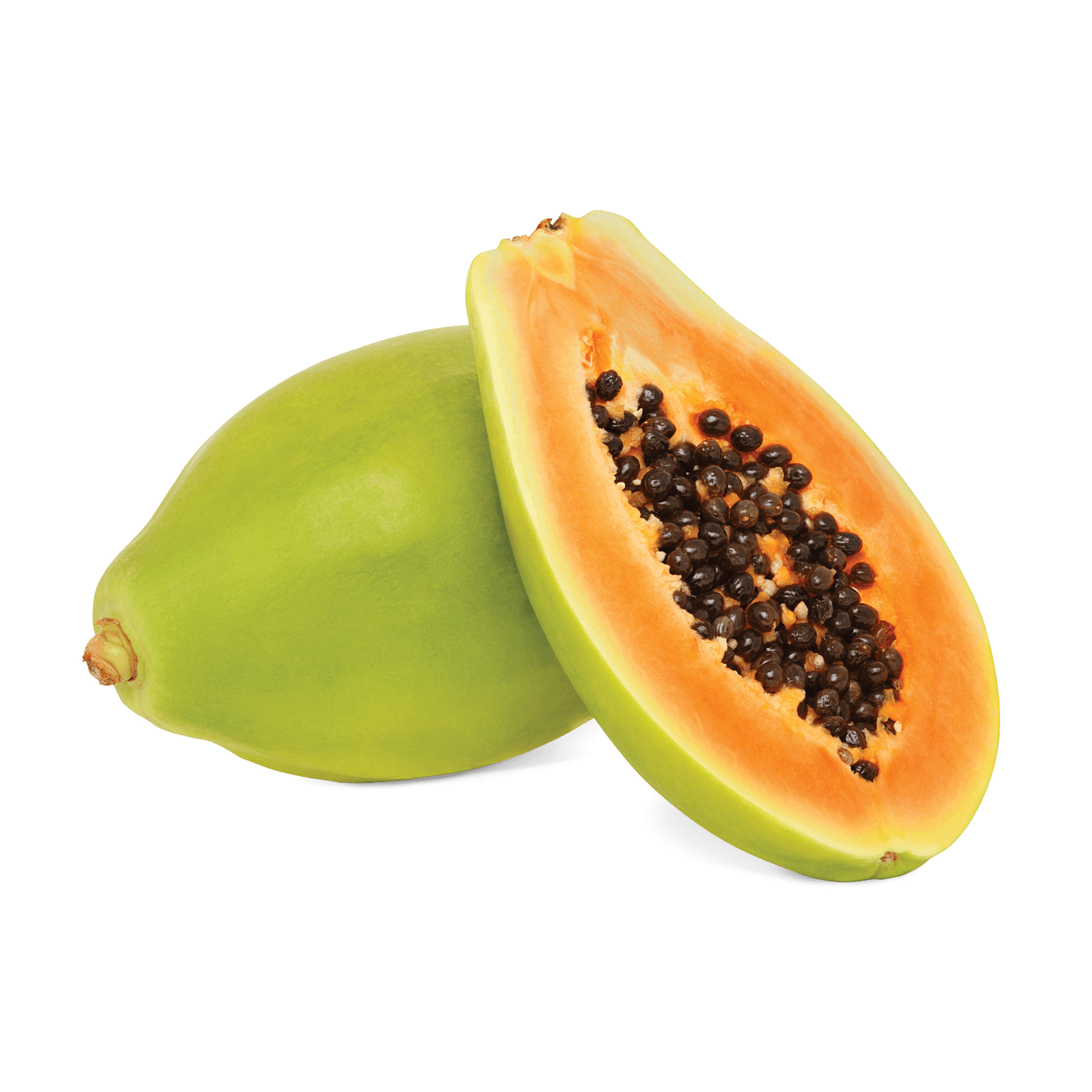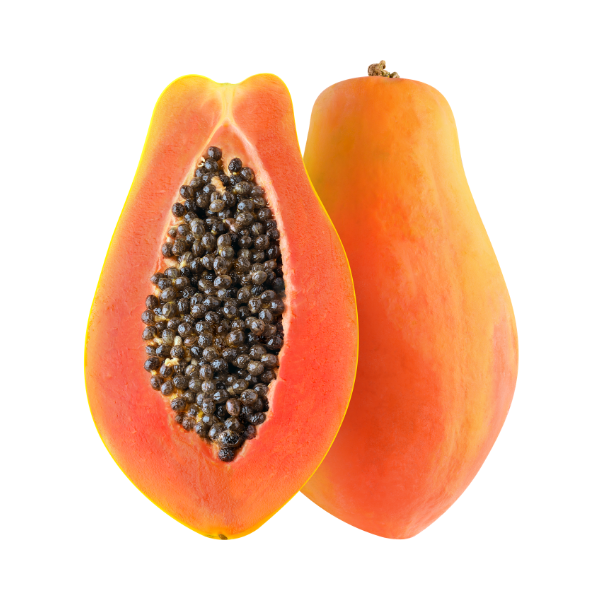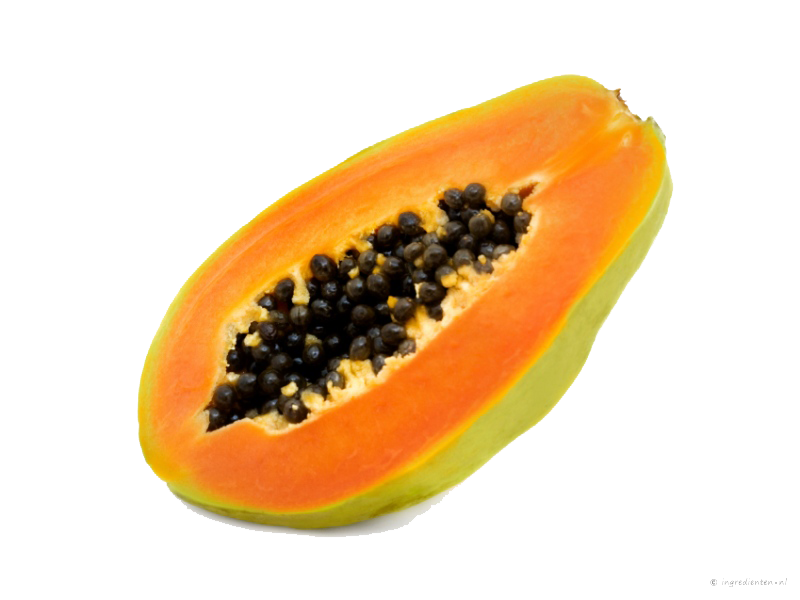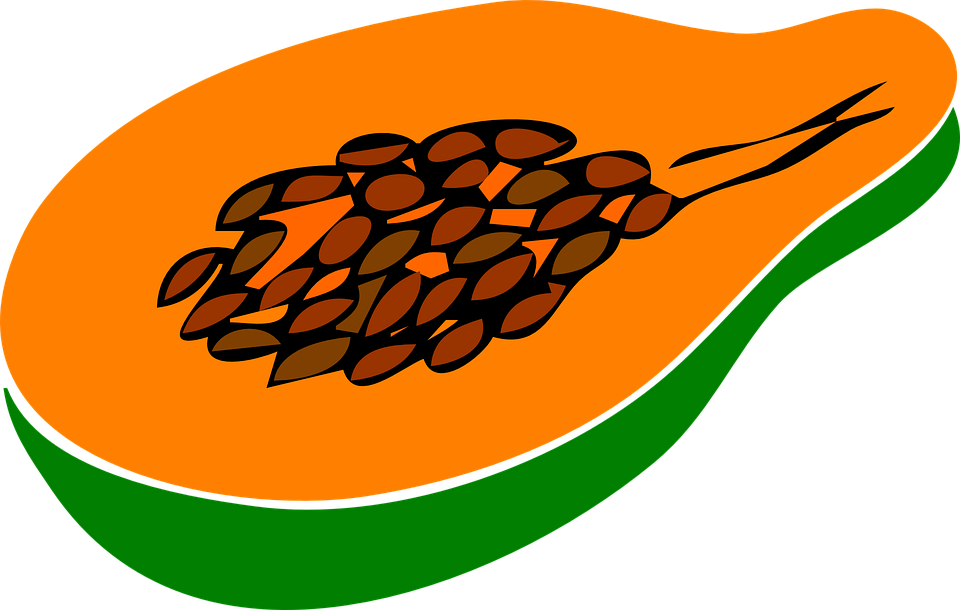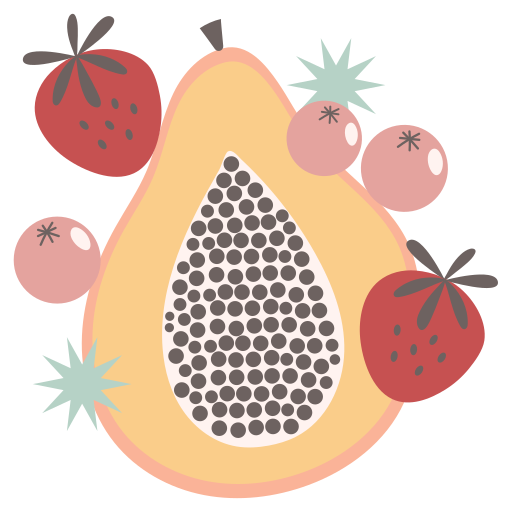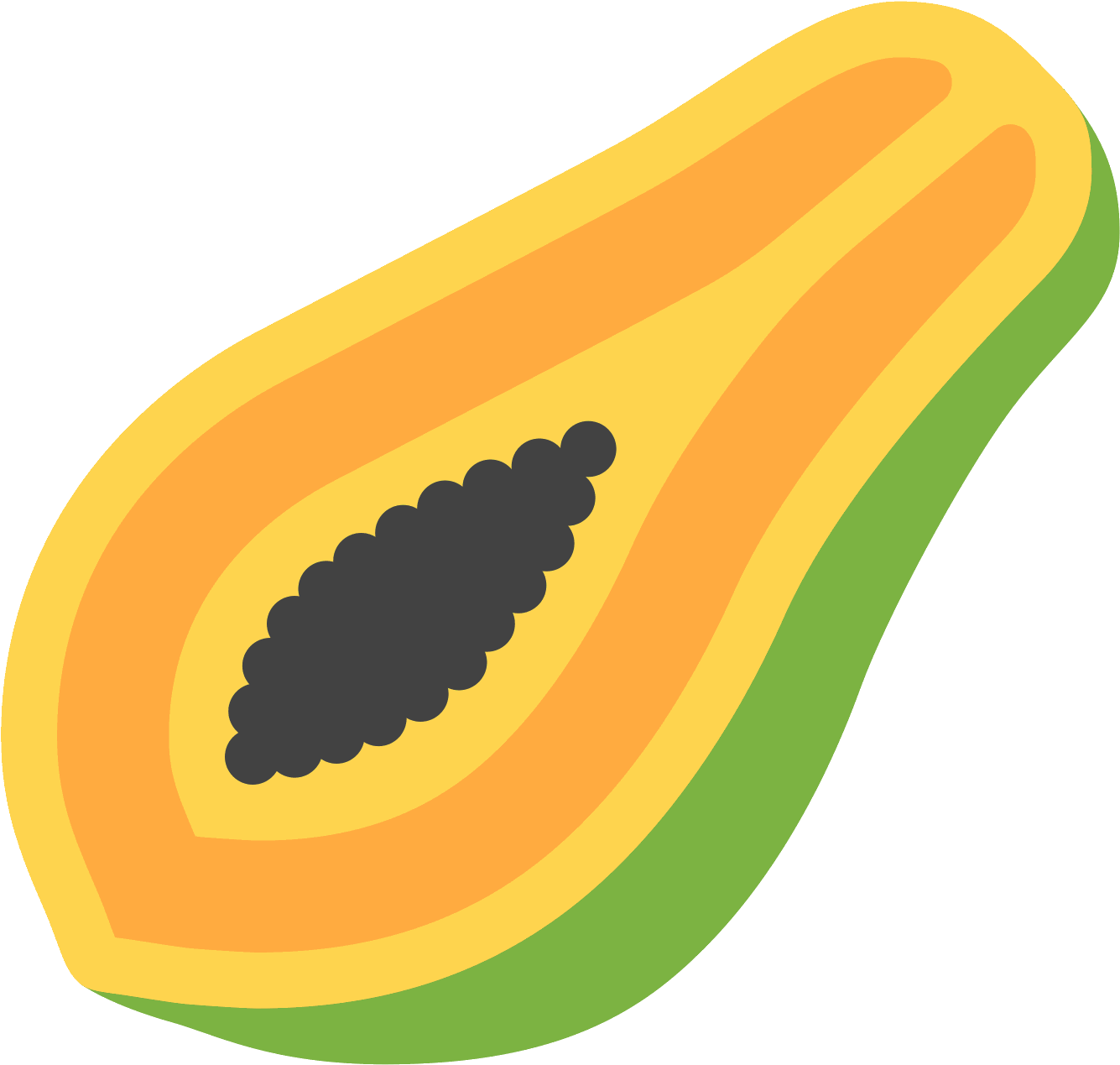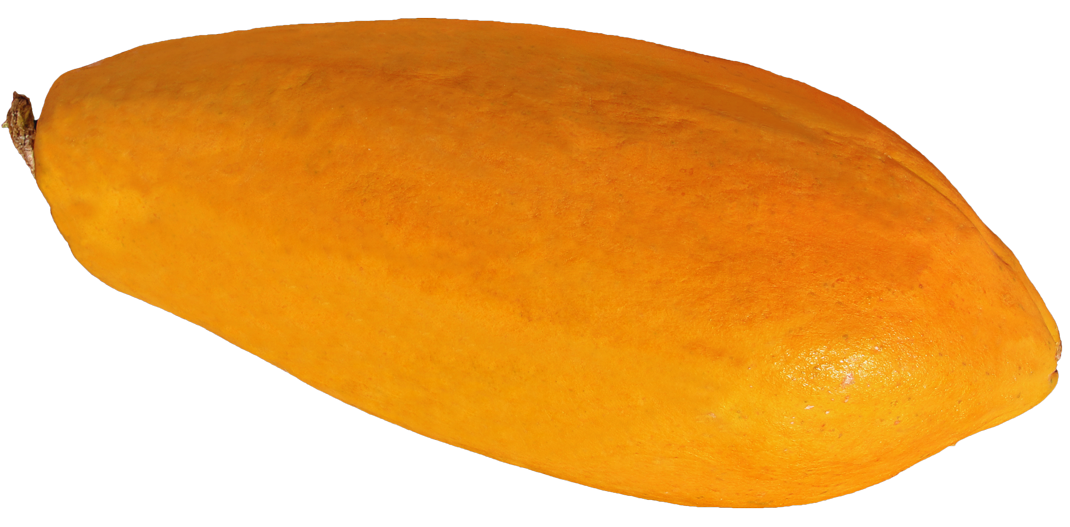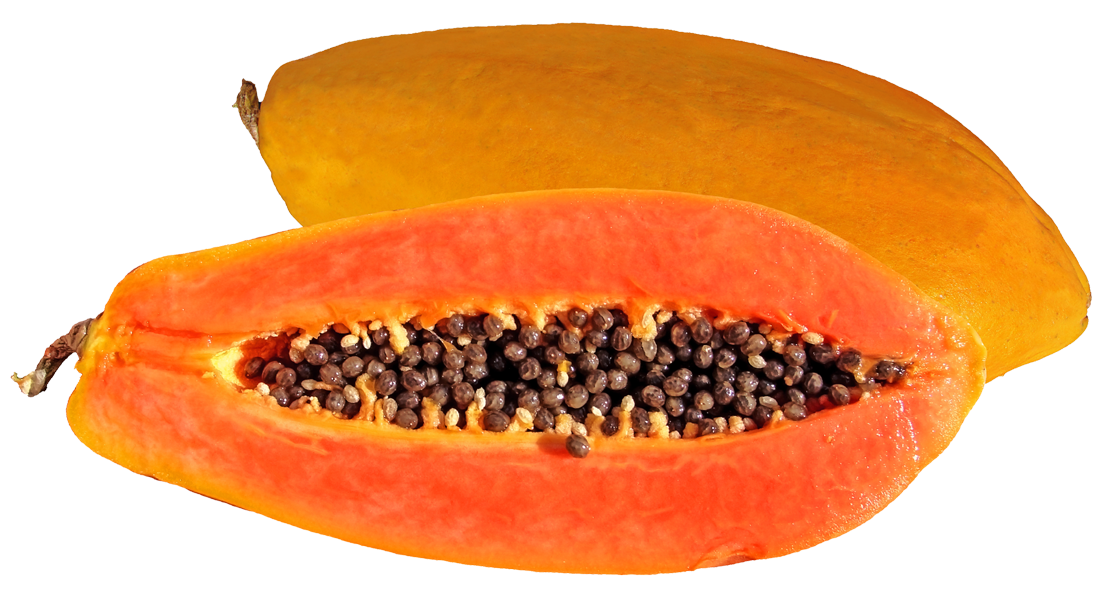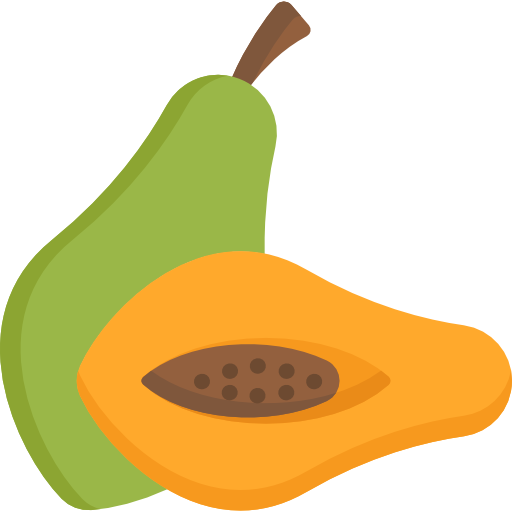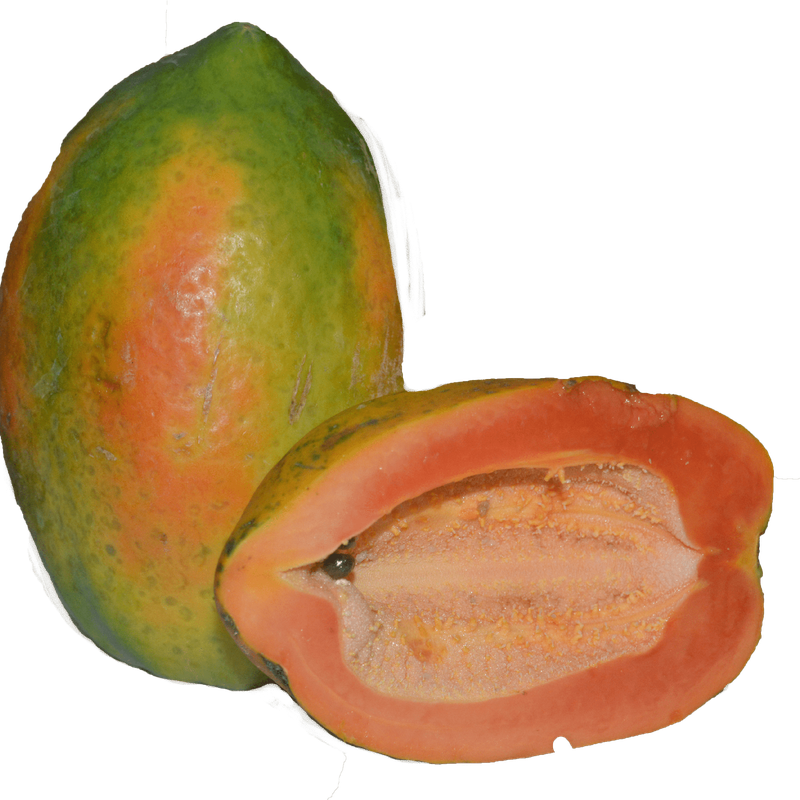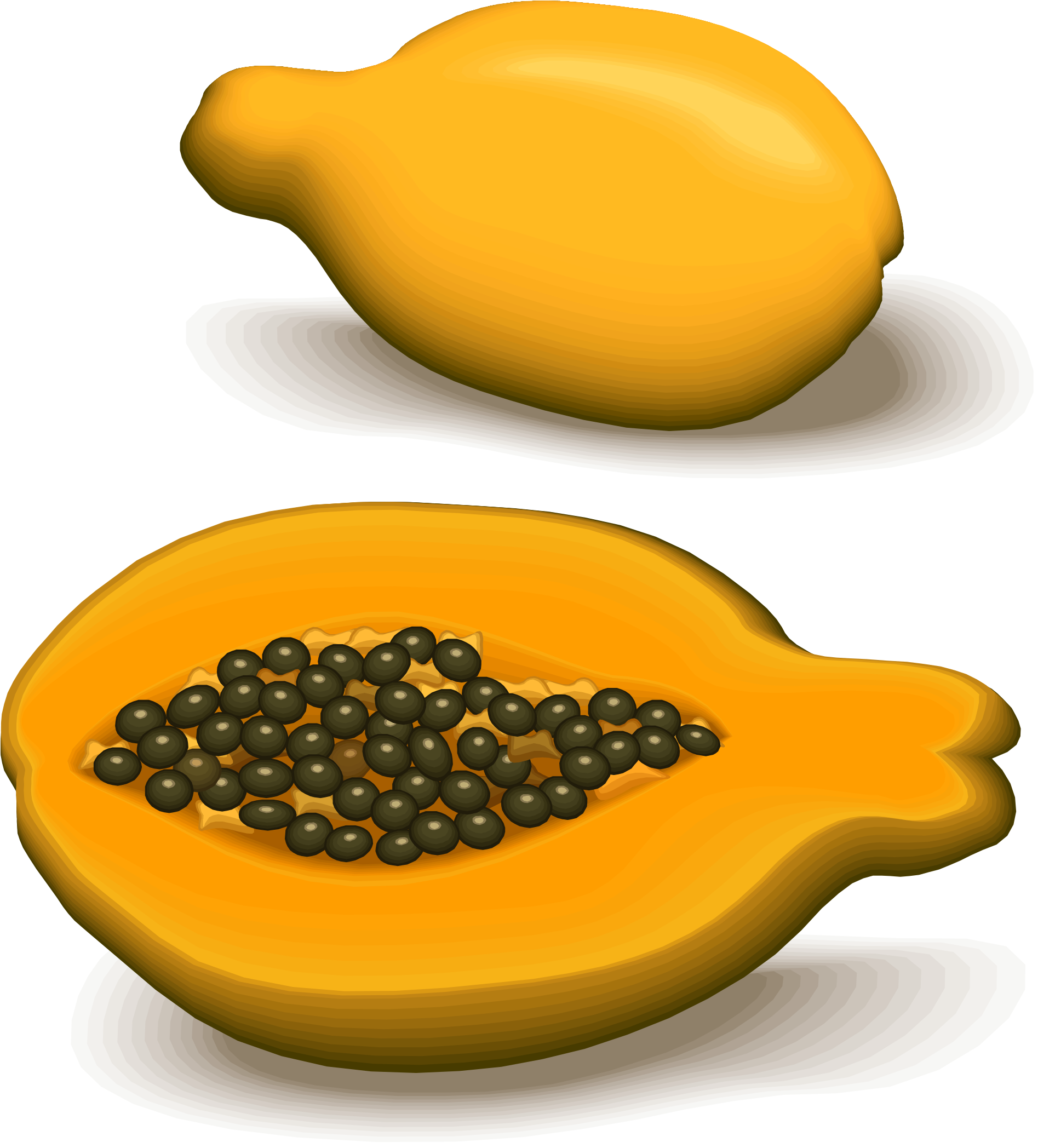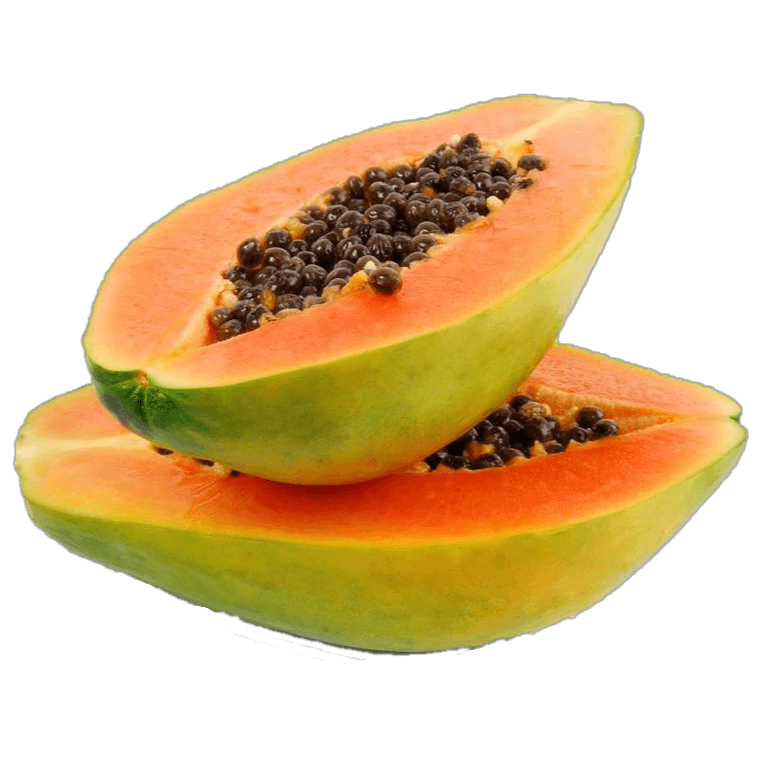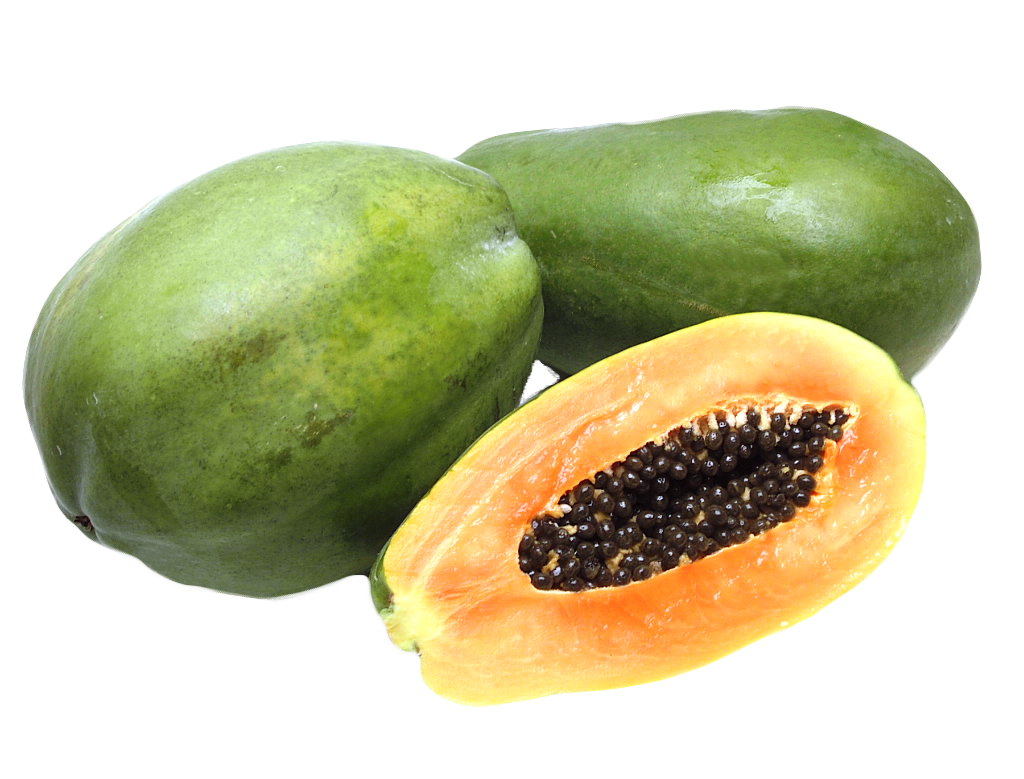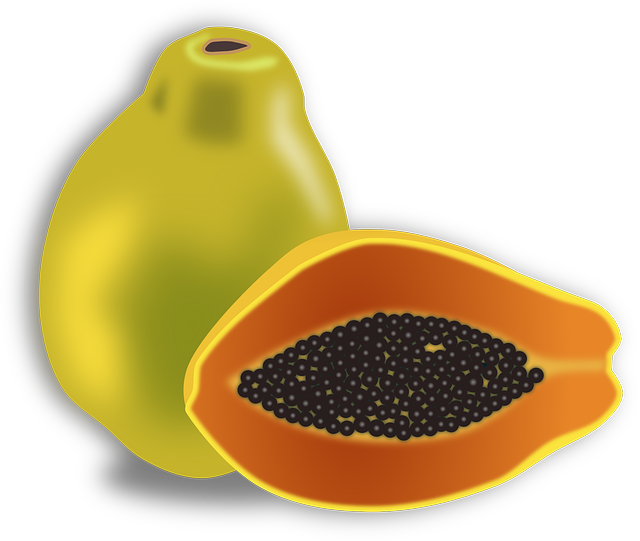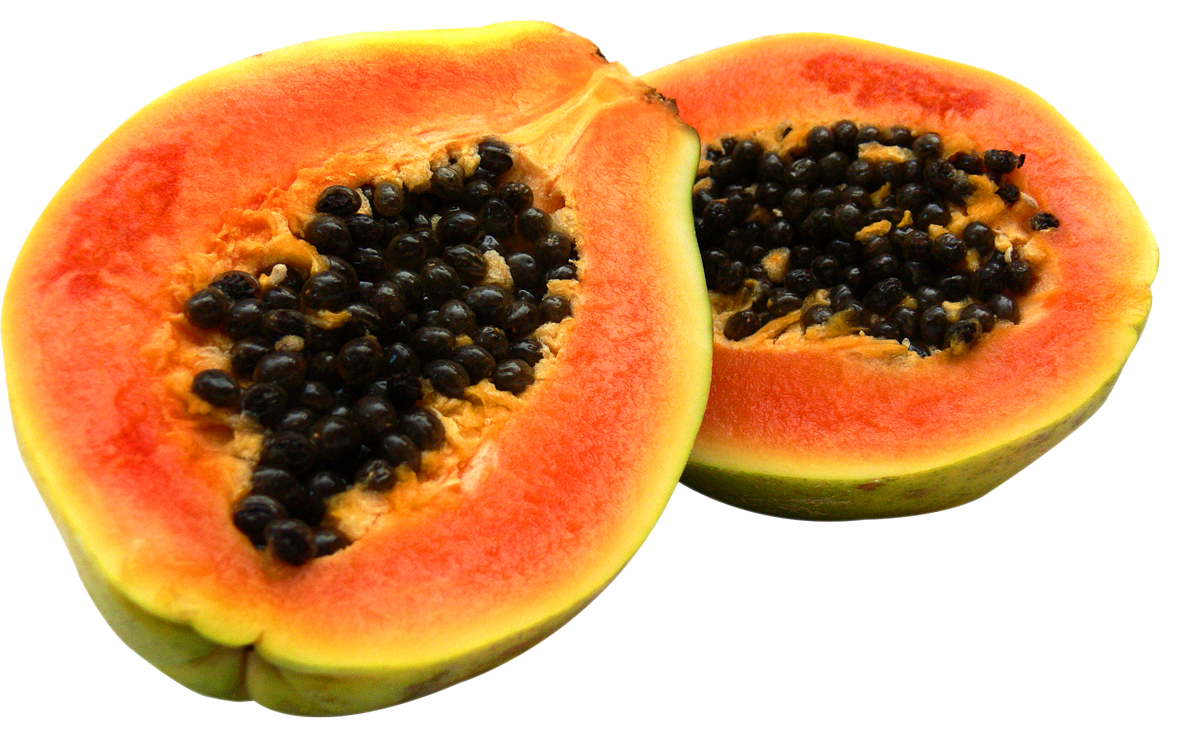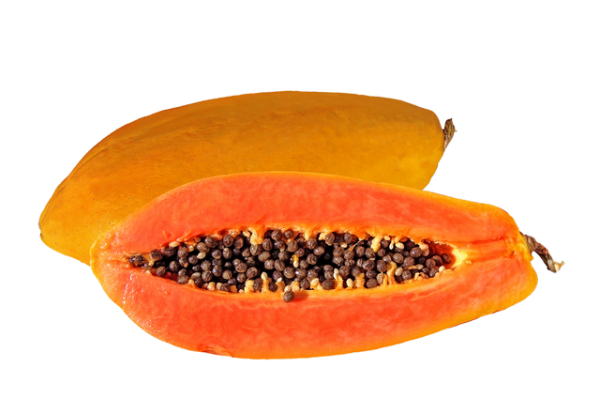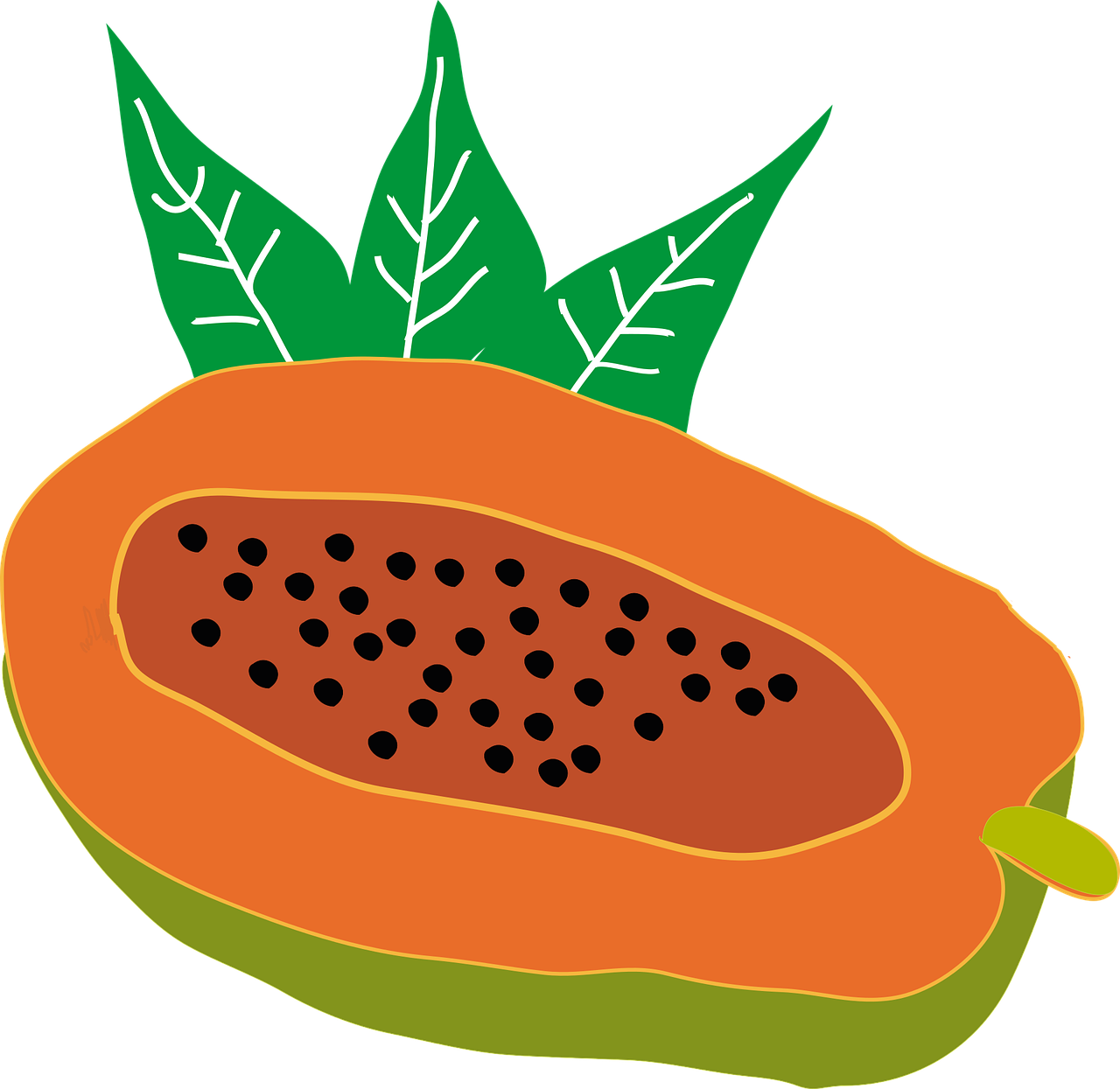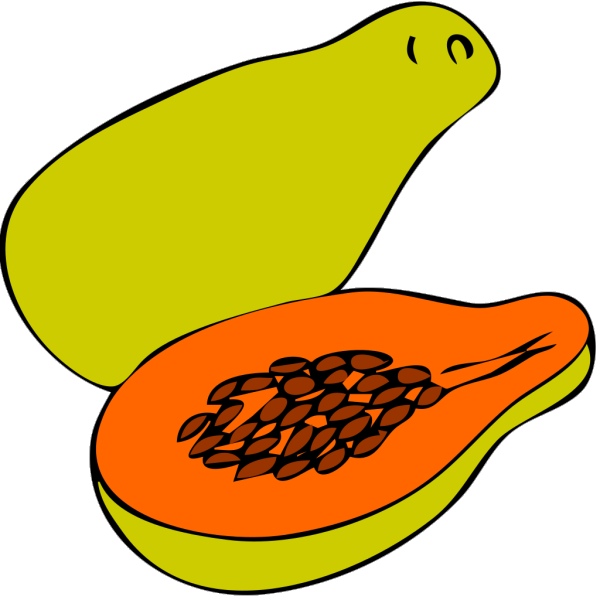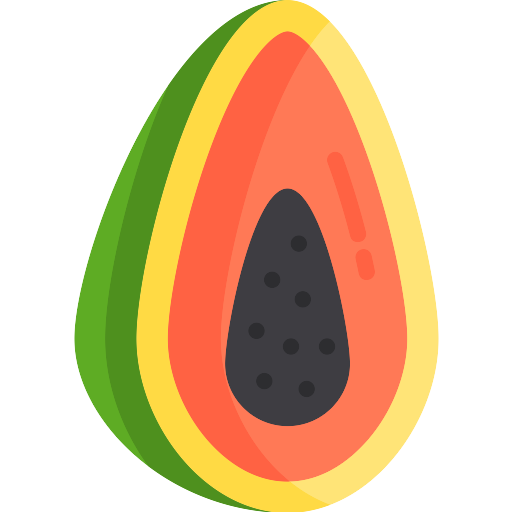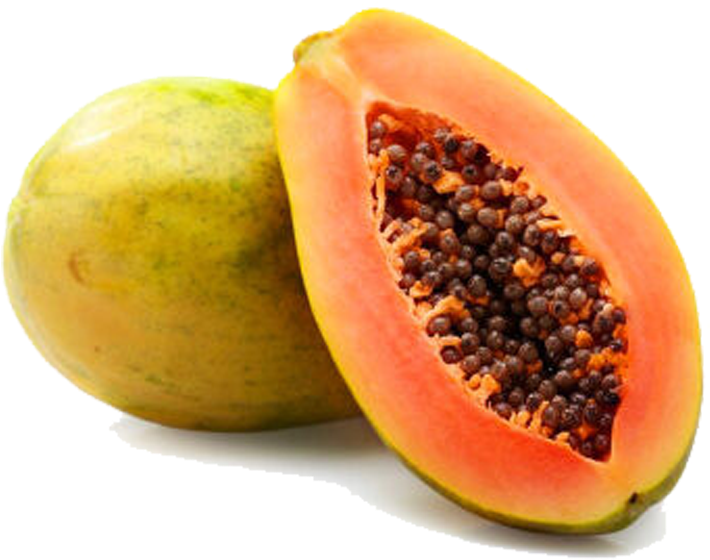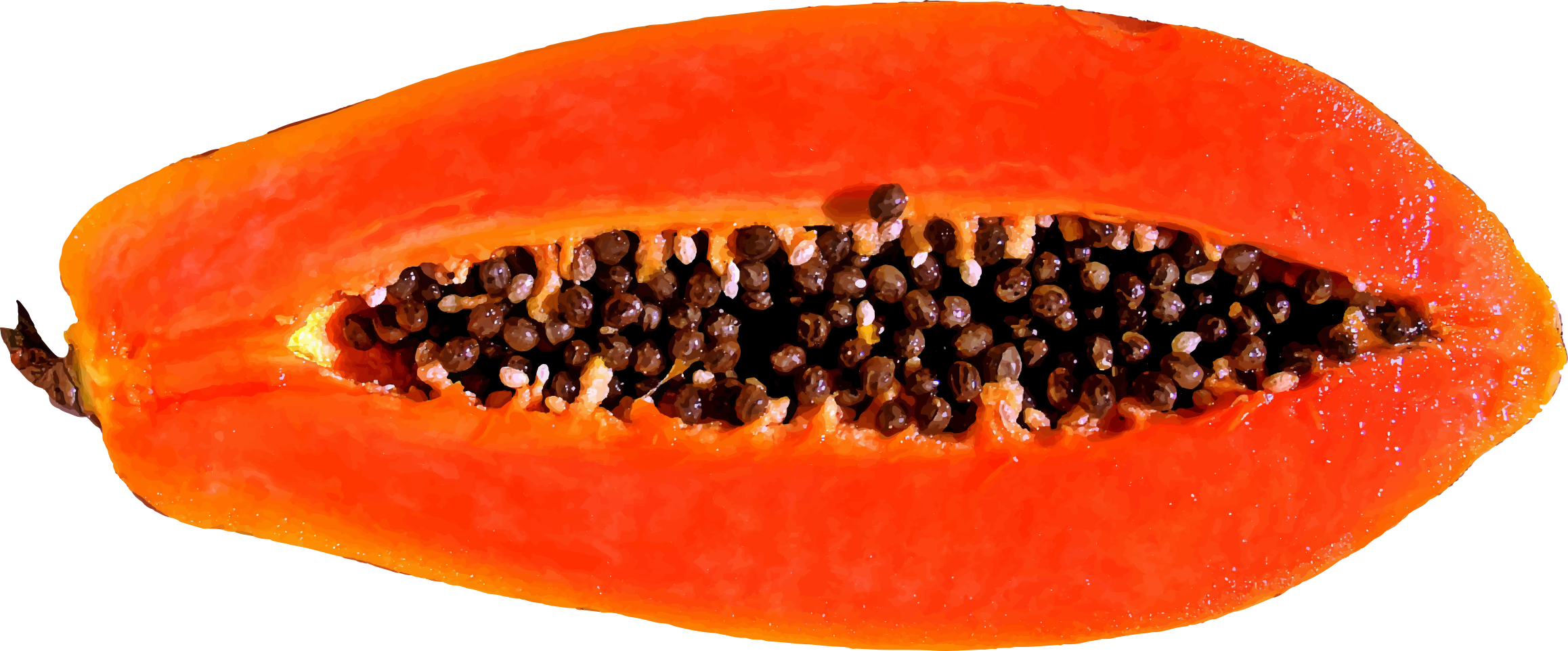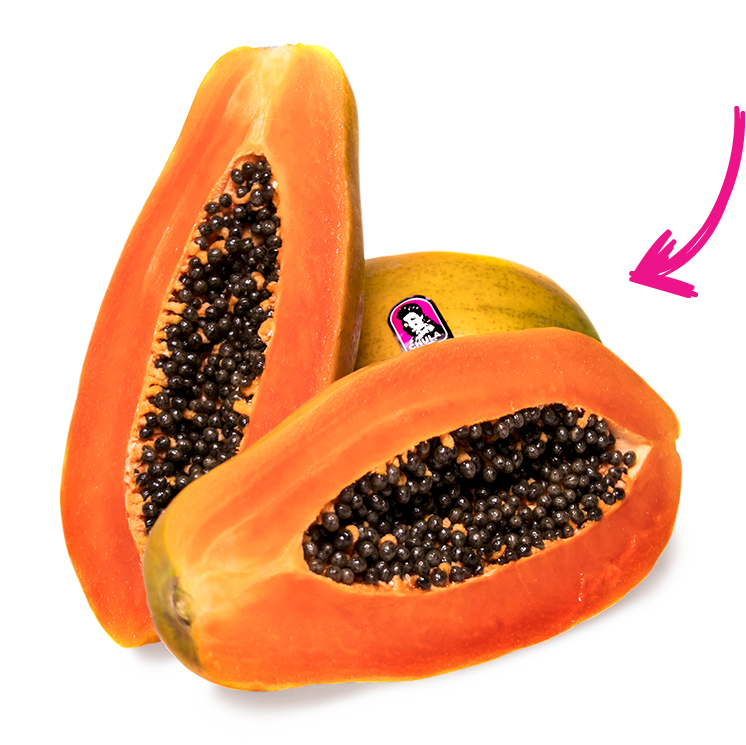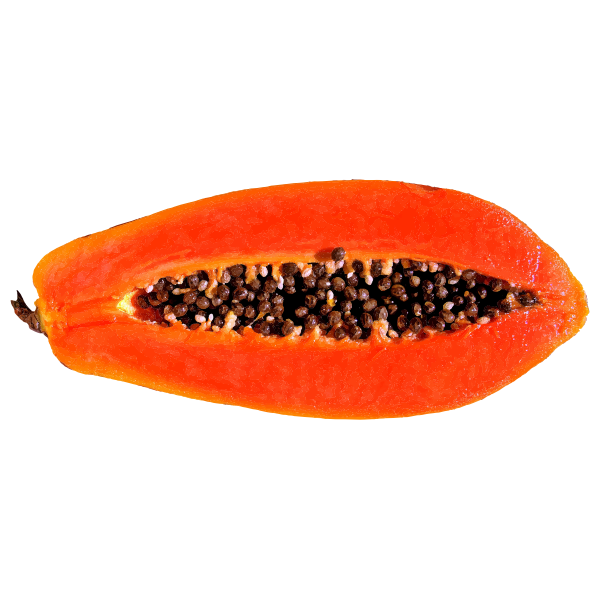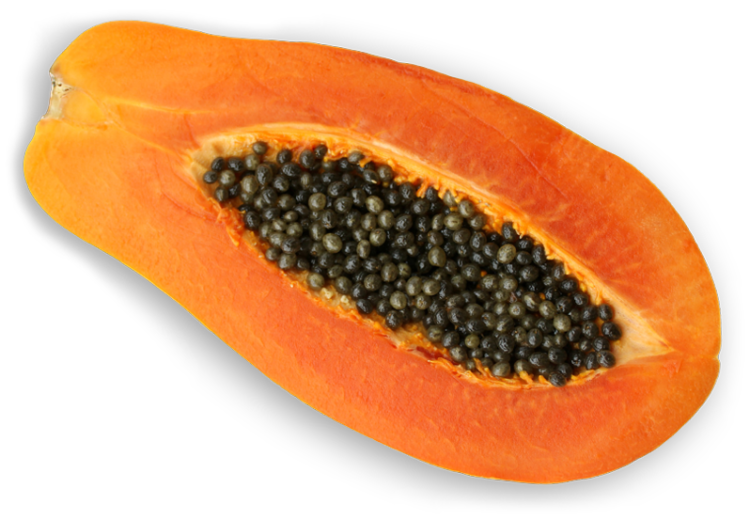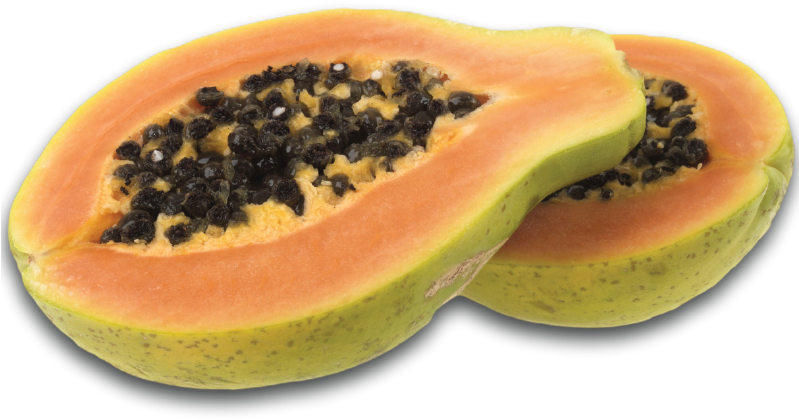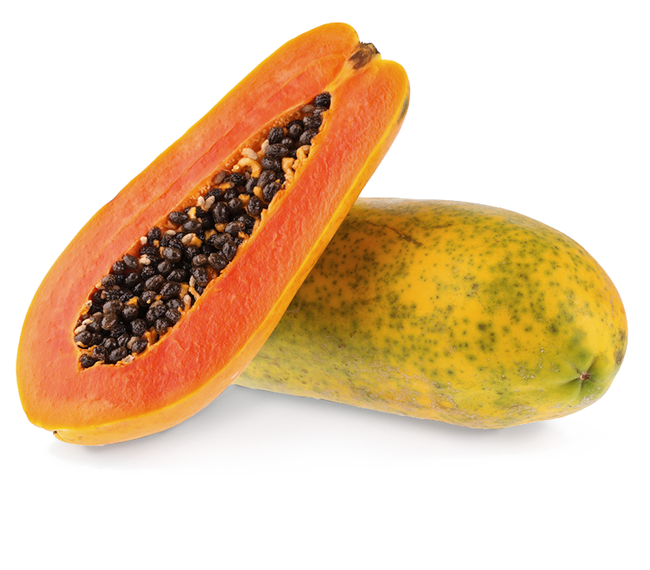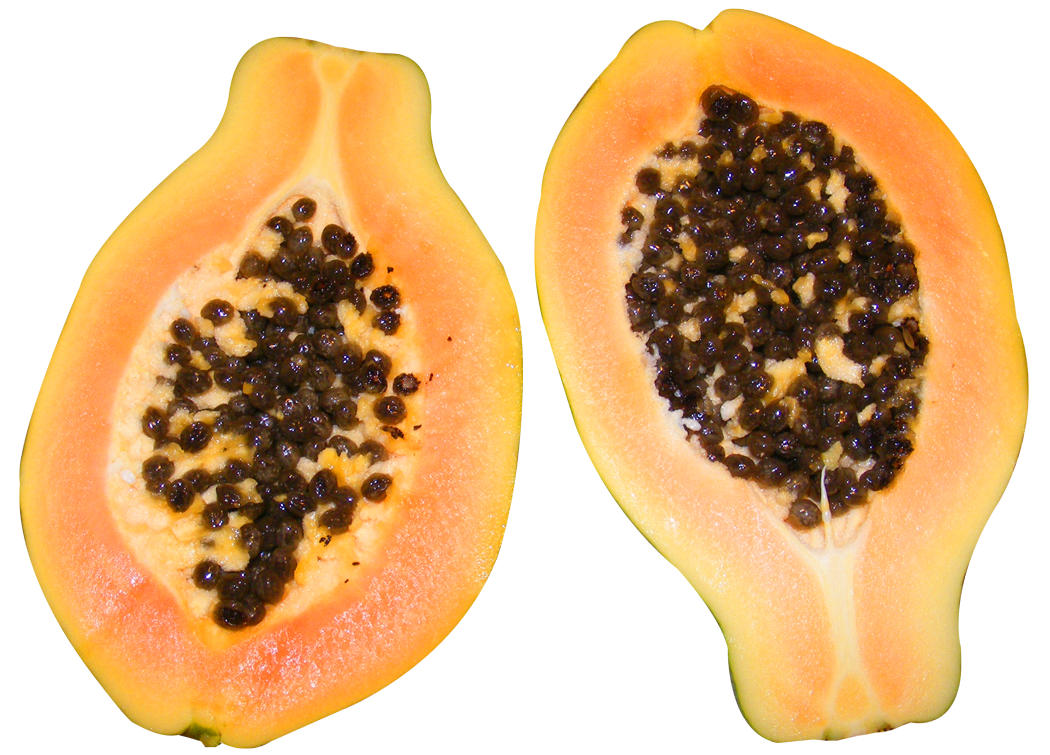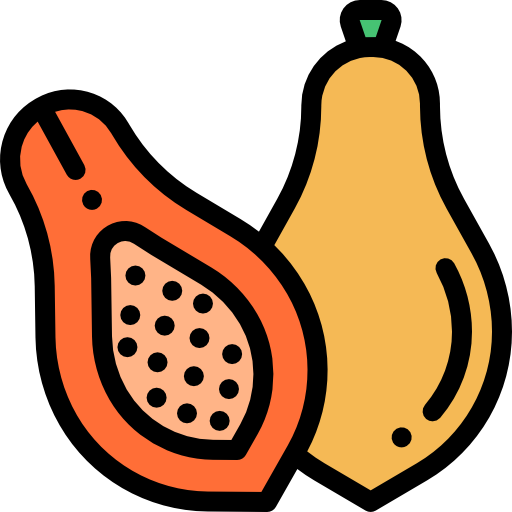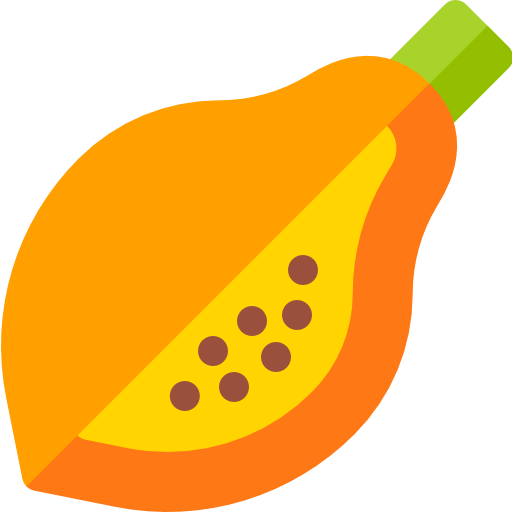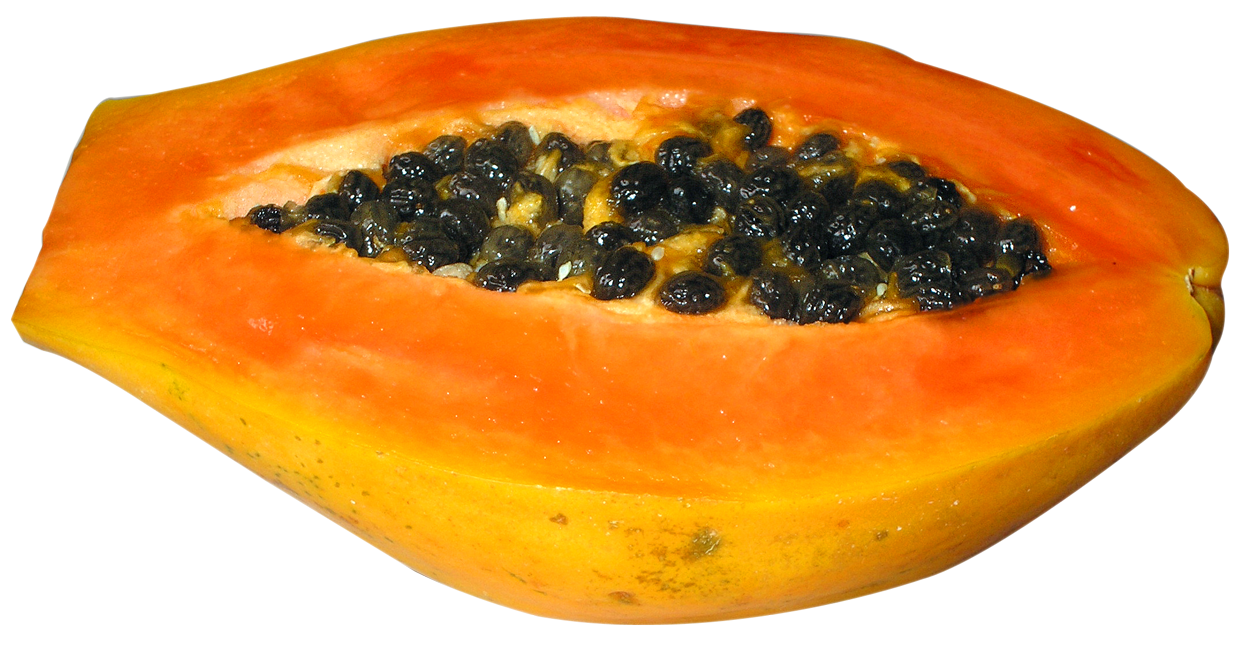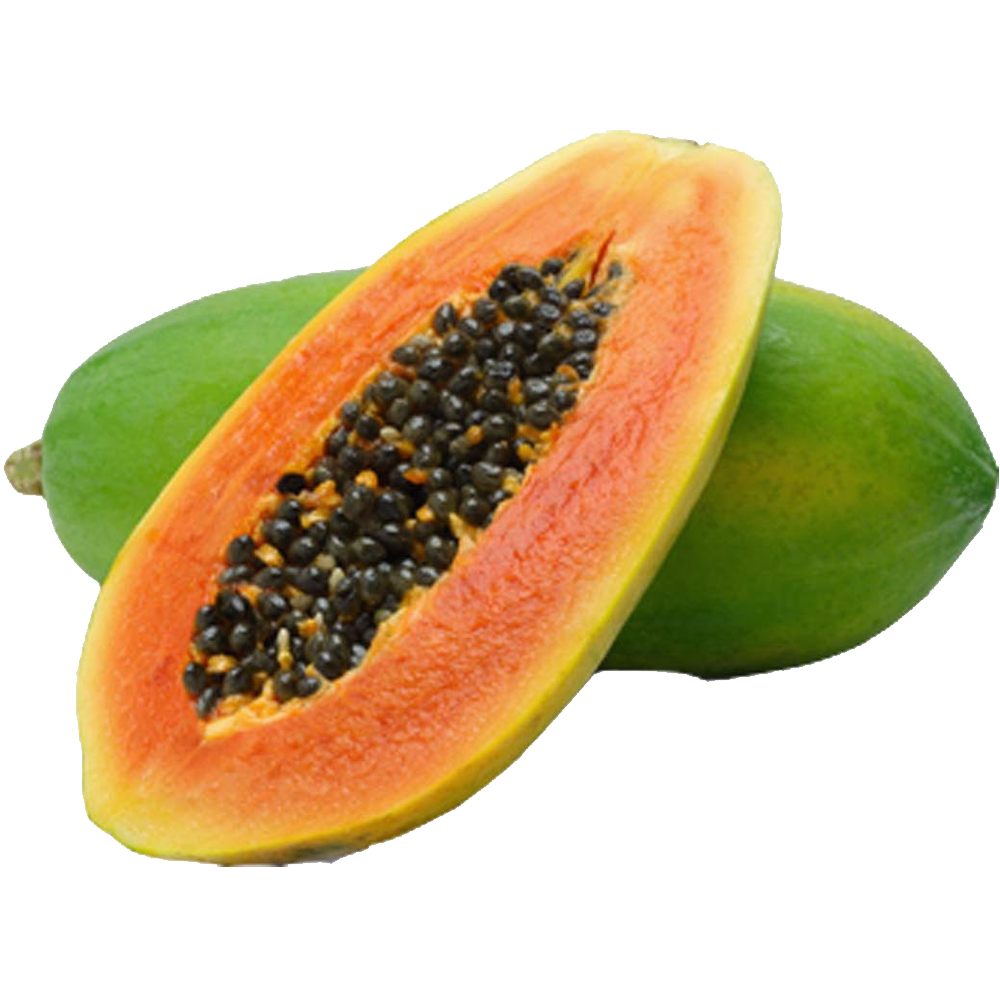Download top and best high-quality free Papaya PNG Transparent Images backgrounds available in various sizes. To view the full PNG size resolution click on any of the below image thumbnail.
License Info: Creative Commons 4.0 BY-NC
The papaya is the Carica papaya plant, one of the 22 recognised species in the Carica genus of the Caricaceae family. It is thought to have originated in the tropics of the Americas, either in Central America or southern Mexico.
The papaya tree is a tiny, sparsely branching tree with spirally arranged leaves limited to the top of the trunk, generally with a single stem growing from 5 to 10 m (16 to 33 ft) tall. Where leaves and fruit were borne, the lower stem is visibly damaged. The leaves are huge, measuring 50″70 cm (20″28 in) in diameter and have seven lobes. Latex is found in all regions of the plant in articulated laticifers. Papayas have two sexes. The flowers are five-parted and extremely dimorphic, with the stamens fused to the petals on the male blooms. A superior ovary and five twisted petals loosely linked at the base distinguish female flowers. 235 Male and female flowers are produced in the leaf axils, with male flowers having multiflowered dichasia and female flowers having few flowers. The pollen grains are large and elongated, measuring around 35 microns in length. The blooms have a lovely aroma, open at night, and are fertilized by wind or insects.
The fruit is a huge berry with a spherical or cylindrical shape with a length of 15″45 cm (5.9″17.7 in) and a diameter of 10″30 cm (3.9″11.8 in). It is ripe when it feels soft (as soft as a ripe avocado or softer), its skin has turned amber to orange, and many black seeds are adhered to the walls of the huge central chamber.
There are three types of papaya plants: male, female, and hermaphrodite. Only pollen is produced by the male, while no fruit is produced by the female. Unless pollinated, the female produces tiny, inedible fruits. Because its blooms include both male stamens and female ovaries, the hermaphrodite may self-pollinate. Hermaphrodite papayas are found in almost all commercial papaya orchards.
The papaya is a tropical fruit that originated in southern Mexico (especially Chiapas and Veracruz), Central America, and northern South America. It is currently grown in almost every tropical country. It grows quickly in cultivation, bearing fruit in three years. However, because it is frost-sensitive, it can only be grown in tropical climes. Temperatures below 2 degrees Celsius (29 degrees Fahrenheit) are extremely dangerous, if not lethal. Growth is typically restricted to the southern portions of Florida, California, and Texas. Standing water will kill the plant in as little as 24 hours, therefore it loves sandy, well-drained soil.
There are two types of papayas that are regularly produced. The delicious, red or orange flesh of one is termed “red papaya,” while the yellow flesh of the other is called “yellow papaw” in Australia. A “green papaya” is any type of papaya that is plucked green.
The large-fruited, red-fleshed papayas known as ‘Maradol,’ ‘Sunrise,’ and ‘Caribbean Red,’ which are frequently marketed in U.S. markets, are cultivated in Mexico and Belize.
In 2011, researchers in the Philippines announced that they have generated papaya resistant to the papaya ringspot virus by crossing it with Vasconcellea quercifolia (PRV).
The genome of Carica papaya was the first transgenic fruit tree to be sequenced. In response to a papaya ringspot virus epidemic in Hawaii in 1998, genetically modified papaya (including the ‘SunUp’ and ‘Rainbow’ types) were licensed and introduced to market. Some PRV DNA has been integrated into the DNA of plant varieties that are resistant to the virus. Eighty percent of Hawaiian papaya plants had been genetically engineered as of 2010. Scientists from the University of Hawaii made the changes, and farmers were given the modified seeds for free.
Download Papaya PNG images transparent gallery.
- Papaya PNG Images HD
Resolution: 497 × 507
Size: 137 KB
Image Format: .png
Download
- Papaya Fruit PNG Image HD
Resolution: 1500 × 1500
Size: 906 KB
Image Format: .png
Download
- Papaya Fruit No Background
Resolution: 600 × 600
Size: 331 KB
Image Format: .png
Download
- Papaya PNG Free Image
Resolution: 800 × 600
Size: 268 KB
Image Format: .png
Download
- Papaya PNG Image File
Resolution: 960 × 610
Size: 125 KB
Image Format: .png
Download
- Papaya Fruit PNG
Resolution: 512 × 512
Size: 95 KB
Image Format: .png
Download
- Papaya PNG
Resolution: 1335 × 1269
Size: 34 KB
Image Format: .png
Download
- Papaya PNG Pic
Resolution: 1070 × 527
Size: 625 KB
Image Format: .png
Download
- Papaya PNG File
Resolution: 1115 × 594
Size: 792 KB
Image Format: .png
Download
- Papaya Fruit PNG Pic
Resolution: 512 × 512
Size: 29 KB
Image Format: .png
Download
- Papaya PNG Image
Resolution: 800 × 800
Size: 714 KB
Image Format: .png
Download
- Papaya PNG Photo
Resolution: 1926 × 2096
Size: 731 KB
Image Format: .png
Download
- Papaya PNG Cutout
Resolution: 775 × 775
Size: 105 KB
Image Format: .png
Download
- Papaya Fruit PNG File
Resolution: 1024 × 779
Size: 795 KB
Image Format: .png
Download
- Papaya PNG Images
Resolution: 640 × 541
Size: 193 KB
Image Format: .png
Download
- Papaya PNG Photos
Resolution: 1180 × 733
Size: 1362 KB
Image Format: .png
Download
- Papaya Transparent
Resolution: 600 × 398
Size: 193 KB
Image Format: .png
Download
- Papaya Fruit PNG Image
Resolution: 1280 × 1245
Size: 300 KB
Image Format: .png
Download
- Papaya Fruit PNG Photo
Resolution: 600 × 600
Size: 63 KB
Image Format: .png
Download
- Papaya Fruit PNG Cutout
Resolution: 512 × 512
Size: 29 KB
Image Format: .png
Download
- Papaya
Resolution: 710 × 560
Size: 743 KB
Image Format: .png
Download
- Papaya Fruit
Resolution: 2316 × 962
Size: 1147 KB
Image Format: .png
Download
- Papaya PNG Clipart
Resolution: 746 × 745
Size: 603 KB
Image Format: .png
Download
- Papaya Fruit PNG Images
Resolution: 600 × 600
Size: 217 KB
Image Format: .png
Download
- Papaya Fruit PNG Photos
Resolution: 750 × 520
Size: 420 KB
Image Format: .png
Download
- Papaya PNG Picture
Resolution: 799 × 420
Size: 649 KB
Image Format: .png
Download
- Papaya PNG HD Image
Resolution: 650 × 570
Size: 387 KB
Image Format: .png
Download
- Papaya PNG Image HD
Resolution: 500 × 500
Size: 15 KB
Image Format: .png
Download
- Papaya Fruit Transparent
Resolution: 1050 × 755
Size: 1243 KB
Image Format: .png
Download
- Papaya Fruit PNG Clipart
Resolution: 512 × 512
Size: 44 KB
Image Format: .png
Download
- Papaya Fruit PNG Picture
Resolution: 512 × 512
Size: 17 KB
Image Format: .png
Download
- Papaya No Background
Resolution: 1240 × 645
Size: 1017 KB
Image Format: .png
Download
- Papaya Fruit PNG HD Image
Resolution: 1000 × 1000
Size: 712 KB
Image Format: .png
Download
